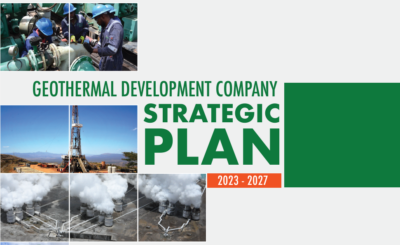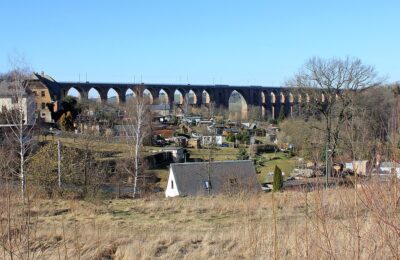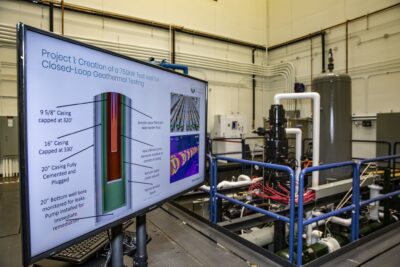Geothermal drilling/fracturing has not caused significant earthquakes, little reason to believe it might
Karl Gawell of the Geothermal Energy Association in the U.S. (GEA) sets the record straight on earthquakes and geothermal drilling, saying that "Geothermal drilling does not cause earthquakes."
Based on comments I received I decided to change the main header for this news item. I always appreciate constructive comments for articles like this. Sometimes one simply doesn´t want to give extra ammunition to some critical voices out there that selectively target the industry without keeping the overall picture in mind.
In a recent interview with Renewable Energy World, Karl Gawell, the Executive Director of the Geothermal Energy Association in the U.S. (GEA) sets the record straight on earthquakes and geothermal drilling.
He states that “Geothermal drilling does not cause earthquakes. Geothermal energy facilities have been providing clean renewable power to America’s electricity grid for nearly fifty years without any significant earthquake events. Unlike other renewable energy sources, geothermal energy is available night and day, regardless of whether the wind is blowing or the sun is shining. That’s one important reason why geothermal resources are the leading renewable electricity source in California.
Although geothermal drilling does not cause earthquakes, there has recently been heightened concern about induced seismicity because of the development of Engineered Geothermal Systems (EGS) technology. EGS can (but does not always) involve the deliberate fracturing of deep reservoir rock to create a permeable geothermal reservoir so that the Earth’s heat can be recovered more easily. Oil and gas companies have used deep fracturing to increase the production of fossil fuels since the 1950s, and today it is a routine practice in that industry.
Researchers are working to apply similar techniques to geothermal systems. It’s worth noting that development of EGS technology is an important key to unlocking the vast reserves of energy available from the heat of the earth. A report prepared by the Massachusetts Institute of Technology (The Future of Geothermal Energy, January 2006) estimates that hundreds of thousands of megawatts of geothermal power could be produced in the United States alone as a result of pursuing research into EGS systems.
To better understand the issue, let’s start with some basics about earthquakes, which are usually triggered by the release of underground stress along fault lines. According to the United States Geological Survey, “An earthquake is the shaking of the ground caused by an abrupt shift of rock along a fracture in the Earth, called a fault.” Low-magnitude seismicity can also be generated whenever rocks are fractured. The injection of fluids into hot rock, as is called for in some new and advanced geothermal techniques, can cause fracturing.
Australia is a leading country in the development of EGS. Regarding the seismic risk from EGS, the Australian Government states in its report, Induced Seismicity and Geothermal Power Development in Australia, that: “Experience in Australia and elsewhere in the world to date suggests that the risks associated with hydrofracturing induced seismicity are low compared to that of natural earthquakes and can be reduced by careful management and monitoring.”
GEA feels that induced seismicity is an area where there is a clear role for government action to support both a sustained research program on this issue and to ensure that appropriate actions are taken to minimize any risk, including the use of standard protocols that address any public safety concerns. It also needs to be recognized that EGS projects may not be appropriate for all communities, and the appropriateness of an EGS project for any particular site should be evaluated on a case-by-case basis, considering the technology to be utilized and the location involved.
The U.S. Department of Energy (DOE) is actively working to address these issues. Federal agencies, together with international groups such as the International Energy Agency, have developed monitoring protocols to address the risk of induced seismicity. For any particular site, these protocols establish standards for assessing natural seismic hazards and the potential for induced seismicity, and for establishing a microseismic monitoring network and implementing procedures for evaluating any damage. They also incorporate criteria for interacting with the local authorities and with the community at large. To minimize risk to the public, the Department is requiring all DOE-funded EGS projects to meet or exceed the protocols during their operations.
DOE is also working to support induced seismicity research to gain a better understanding of causal relationships and appropriate mitigation issues. Under the American Recovery and Reinvestment Act of 2009, the DOE has announced over $4.5 million dedicated to induced seismicity research, with an additional $2 million for monitoring and mitigation, development of best practices, and public education and outreach including an informational website on induced seismicity.
Turning briefly to more conventional geothermal development and operation, small seismic events known as microearthquakes have been recorded and monitored in the immediate vicinity of some injection sites. These usually have Richter magnitudes below 2 or 3* and are ordinarily imperceptible to people unless they are quite close to the epicenter. Microearthquakes are not a significant hazard to the surrounding communities or to the power plant.
Geothermal power has been in production for decades at dozens of sites around the world, and the industry is proud of its safety record. Based on considerable experience with geothermal power plants (more than 10,000 MW installed worldwide to date), there is no reason to believe that they pose a serious threat to communities or the environment from their operations.
Geothermal energy can sustain strong growth for decades into the future by tapping both identified and undiscovered geothermal resources as well as expanding into new applications like low-temperature resources and oil and gas co-production. There are tens of thousands of megawatts of undeveloped potential that do not require major technological breakthroughs to provide clean, reliable and inexhaustible 24/7/365 power for the nation. DOE should proceed with research efforts to develop EGS technology for the long-run, recognizing that there is plenty of time to refine the scientific knowledge and technology needed to address any risks from future EGS development.
For more details, including references for the quotes and statements above, see “GEA Issue Brief: Geothermal Energy and Induced Seismicity.”
* When comparing different earthquake events, it’s important to understand that the Richter scale can be a confusing measurement. For example, an earthquake of magnitude 3.5 has a “shaking amplitude” ten times larger than an earthquake of magnitude 2.5. To make it even more complicated, the Richter magnitude of an earthquake is proportional to the logarithm of the “radiated seismic energy“ — which means that an earthquake of magnitude 3.5 releases 32 times as much seismic energy as one of magnitude 2.5. To use a recent example for perspective, California’s Central Coast experienced an earthquake recorded at magnitude 4.0 in early September, and according to the press reports, there were “no reports of any damage or injuries.” This recent Central Coast event had a shake magnitude one hundred times more than a magnitude 2.0 microearthquake, and released one thousand times more energy!”
Source: Renewable Energy World











